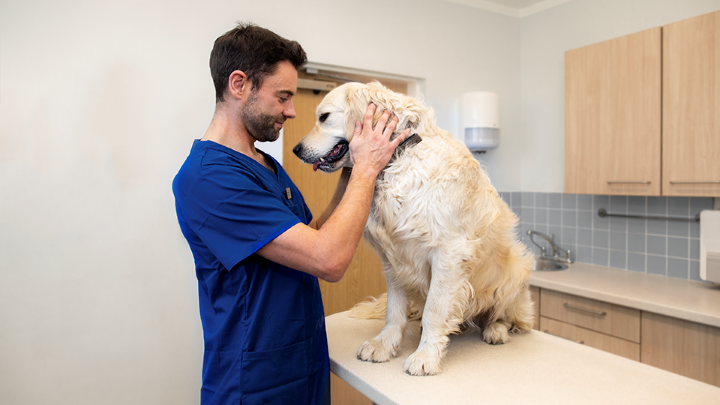Atopic Dermatitis In Dogs And Cats
How to spot if your pet has a skin allergy
As one of the most common skin allergies, atopy affects a huge number of pets. Learn how to spot and treat it.

What is atopy?
Atopy, or atopic dermatitis, is one of the most common skin allergies in both cats and dogs. It can cause severe itching, redness, and rashes, often resulting in skin infections.
Atopy can be caused by a number of common allergens in the natural environment, including pollen from grasses, trees and weeds, mold spores, house dust mites and insects.
Usually, atopy is first noticed in pets under the age of three. However, older pets can also become affected. Pets that develop atopy usually experience skin trouble throughout their lives.
Atopic dermatitis tends to be seasonal, particularly if it’s caused by pollen in the natural environment. Spring and summer are usually the most aggravating time for pets with atopy.

What are the symptoms of atopy in dogs and cats?
Pets often react to atopy in different ways, although it usually manifests itself as red patches with infected pimples, hive-like wheals and crusts. Atopy usually develops on the face, legs, feet, belly, and ears; in fact, many ear infections in dogs are associated with atopy.

Dogs will scratch excessively, but cats are more secretive and usually display excessive licking on the belly, back and behind the legs, with tiny scabs appearing on the neck and tail base.
Initially this scratching can be mistaken for fleas, this is usually the first check that your vet will do.
Skin atopy in dogs and cats can cause the following symptoms:
- Scratching and rubbing
- Redness
- Hair loss from repeated biting, licking, chewing and scratching
- Rashes, infections, and irritation
- Scabs and bleeding
- Unusual odour
- Skin thickening and colour changes
- Ear infections
- Scales and crusts on the skin
What causes atopic dermatitis?
A combination of factors including genetic make-up and environment predisposes some pets to atopy. It can develop at any age, so isn’t something that they will suffer with from when they are a puppy or kitten.
Which dog breeds are more likely to develop atopy?
Atopy and skin allergies can develop in all breeds of dog, but there are some breeds that are more at risk such as:
- West Highland White Terrier
- Boston Terrier
- English Bulldog
- Labrador Retriever
- Bichon Frise
- Sha Pei
- Dalmatian
This is because the condition is caused by an inappropriate immune reaction, as opposed to the allergen itself. It’s worth checking with your vet if you think your dog may be suffering.
How to treat atopic dermatitis
If you think that your pet may be allergic to something, then you should see your vet. Your vet will perform tests to ensure that there is no other reason for your pet’s skin problems.

Treatments may include oral medications e.g. antihistamines or ciclosporin, nutritional supplements, topical treatments, immunotherapy, or even newer monoclonal antibody treatments, and will be determined by your pet’s particular allergy and their individual lifestyle.
Your vet may also suggest removing the allergens from your pet’s environment if possible.
In the vast majority of cases, atopy can be controlled, and pets can lead a normal and healthy life. Since it's a lifelong condition, regular checks with your vet are recommended to maintain control and ensure your pet is as comfortable and healthy as possible.

Our Healthcare Plans For Your Dog
With the Medivet Healthcare Plan, you can save an average of £285 each year and that’s without discounts that the plan offers on top.
Learn more
Our Healthcare Plan For Your Cat
With the Medivet Healthcare Plan, you can save an average of £165 each year and that’s without discounts that the plan offers on top.
Learn more
